Many of us have heard of Johnny Appleseed many times as we were growing up. I know that I did. A few days back I decided to research and see if Johnny Appleseed was a real person.
Before I could do this I found an article in our local paper tonight which does prove that indeed Johnny Appleseed was a real person.
Here is his story:
Johnny Appleseed in real life was one John Chapman, born on September 26,1774 near Leominster, Massachusetts. Little is known of his early life, but he apparently received a good education which helped him in his later years. By the time he was 25 years old, he had become a nursery man and had planted apple trees in the western portions of New York and Pennsylvania. Some of the orchards in those areas were said to have originated with his apple trees.
When the rich and fertile lands lying south of the Great Lakes and west of the Ohio river were opened for settlement in the early 1800's, John Chapman was among the very first to explore the new territory. This was the Northwest Territory from which the states of Ohio, Michigan, Indiana, and Illinois were later formed. For nearly half a century Johnny Appleseed roamed his territory. When settlers arrived, they found John Chapman's young apple trees ready for sale. In the years that followed, he became known as the Apple Tree Man, or Johnny Appleseed.
His manner of operation was simple. He went into the wildreness with a bag of apple seeds on his back until he found a likely spot for planting. There he would clear the land by chopping out weeds and brush by hand. Then he planted his apple seeds in neat rows and built a brush fence around the area to keep out straying animals. His nurseries varied in size. Some were only an acre or so, others covered many acres.
He did all of the work himself, living alone for weeks at a time with only the Indians and wild animals for companionship. He never carried a gun or weapon of any kind. He was a deeply religious man who lived by the Golden Rule and had no fear of man or beast. Indians accepted him as a friend, and he is reputed to have talked at times to the wild animals who watched him as he worked in his nurseries. Undoubtedly, they sensed his kind and gentle nature. Once, it is reported, he was caught in a snow storm and crept into a hollow fallen tree for shelter. He found it occupied by a hibernating bear and her cubs, but spent the night there nonetheless. There is no report, however, of how much space he kept between them and himself.
John Chapman was a practical businessman as well as a sincere Christian. Somewhere, somehow, he had caught a vision of the wilderness blossoming with apple trees, orchard after orchard of carefully nurtured trees, whose fragrant blossoms gave promise of a fruitful harvest for the settlers. Willingly he endured the hardships of his wilderness life as he worked to make his dream come true. His sturdy young trees lightened the hearts and lifted the spirits of many settlers, for there is a suggestion of a permanent and loving home when one plants fruit trees around a cabin.
He sold his trees for a few pennies each, accepting any of the coins current on the frontier. Some had no cash, and from those he accepted a simple promise to pay at a later date. Few failed to keep their word. He sometimes accepted payment in used clothing.
Like many of the settlers, he went barefooted a great deal because shoes were hard to come by and seldom fit his tough gnarled feet. As he ate no meat, he he carried a stewpot or kettle with him. In this he could gather nuts or berries in season, carry water, get milk from a settler's cow, boil potatoes, or drop a handful of coarse-ground meal into the boiling water to make an unpalatable but nourishing meal. He has been pictured wearing such a pot on his head, but more likely he kept it tied to his pack rather than let it bounce on his head.
He preferred to walk, carrying his precious apple seeds and the simplest of camping gear on his back. He also used a boat, canoe, or raft to transfer larger loads of seeds along the many waterways. Customarily, he obtained his apple seeds every fall. At first, he went back to the cider presses in western Pennsylvania where he selected good seeds from the discarded apple pressings. He washed the seeds carefully and packed them in bags for planting the following spring. In later years, as cider presses were located in the new territory, he gathered his seeds closer to home.
There is no way to estimate how many millions of seeds he planted in the hundreds of nurseries he created in the territory lying south of the Great Lakes and between the Ohio and Mississippi Rivers. This was his service to mankind.
John Chapman never married, but he loved people and especially children. As the settlers moved into the wilderness, his lonely nights were fewer because he was a welcomed guest at every cabin. Many a night after the simple meal, he would hold them all enthralled with his stories or read to them from the Bible or from some of the religious material he carried.
It was with such friends that he spent his last night. He had been living near Fort Wayne, Indiana, when word came one March day that cattle had broken through the brush fence around one of his nurseries some twenty miles away. Although it was a raw spring day, he set forth immediately to repair the damage. On his return trip he was stricken with a disease known as the winter plague. He found shelter with friendly settlers but failed to survive the attack. A newspaper account gives the date as March 18, 1845, but other dates have been given. Such confusion is not at all surprising when one remembers that this kind and gentle man was known by the name of Johnny Appleseed to almost everyone, and only a few knew that his true name was John Chapman. Many of his young seedlings may have crossed the plains in covered wagons to produce their bountiful fruit in the western states. Certainly, his fame did, for the name of Johnny Appleseed is known throughout all of the United States and elsewhere in much of the world. People continue to improve their environment in Johnny Appleseed's manner whenever they plant a new seedling!
The last known apple tree to still be alive is on a farm in Nova, Ohio owned by the Algeo family. Though it is cracked and splintered and held together by chains this tree is now 170 years old and still produces a good crop of apples each Fall.
Thank You John Chapman for such a wonderful gift to society!
Welcome To Pilgrims and Pioneers!
After many years of researching my family geneaology I have been lucky enough to discover actual information about my relatives that lived in the Pilgrim Era and the Pioneer Era- while many people also have realtives from those eras- many do not know their names or where they lived- actually seeing the proof in print makes you much more aware of who they really were.
After discovering these relatives it of course made me curious to learn more about the eras that they lived in and what their lives were like as, the history I learned in grade school had long since been forgotten.
I decided to start this blog for others who are also interested in these eras.
Some of the information here will be actual facts about my realtives and some will be information about the eras in general that I have found on the web.
I hope you will enjoy traveling back in time with me!
After discovering these relatives it of course made me curious to learn more about the eras that they lived in and what their lives were like as, the history I learned in grade school had long since been forgotten.
I decided to start this blog for others who are also interested in these eras.
Some of the information here will be actual facts about my realtives and some will be information about the eras in general that I have found on the web.
I hope you will enjoy traveling back in time with me!
Friday, September 5, 2008
Subscribe to:
Post Comments (Atom)
Prairie Wild Morning Glory

Prairie Phlox

Prairie Sundrops

The Famous Rock!
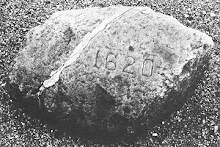
Plymouth Rock dated 1620
Plimoth Plantation
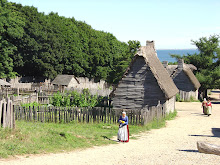
The Village
Plimoth Plantation

A Keeping Room






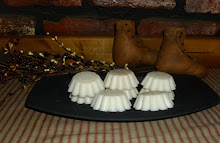


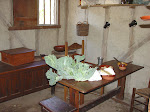
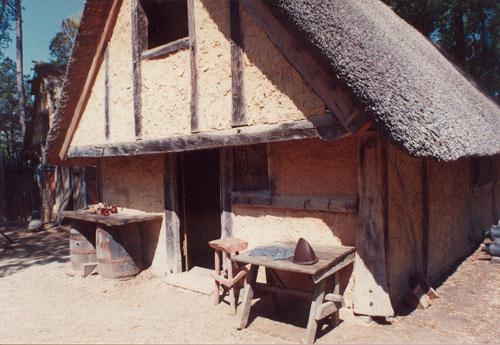
5 comments:
Johnny Appleseed is a hero to me. What an exceptional person he was.
What a wonderful story..a piece of history never forgetten.
luv Ann.xx
Glad you enjoyed it!
We have been reading about Johnny Appleseed this week and doing all sorts of apple crafts. I'm looking forward to sharing this more comprehensive history with my children.
Thank you!
Lea
Hi, I am actually a descendant of Paul Chapman. He grew up in New Hampshire. He studied to become a minister but went into farming instead.
It was actually apple trees that he took with him. He had many nurseries and would take bags of very small apple trees (saplings). He would plant them all over the place. He would often send people who were traveling with many of these trees...they would then plant them along the traveling route.
About 10 years ago his descendants found bags of apple seeds behind a wall of a home in Newmarket, NH
He is responsible for the apple tree groves in NH and ME.
Post a Comment